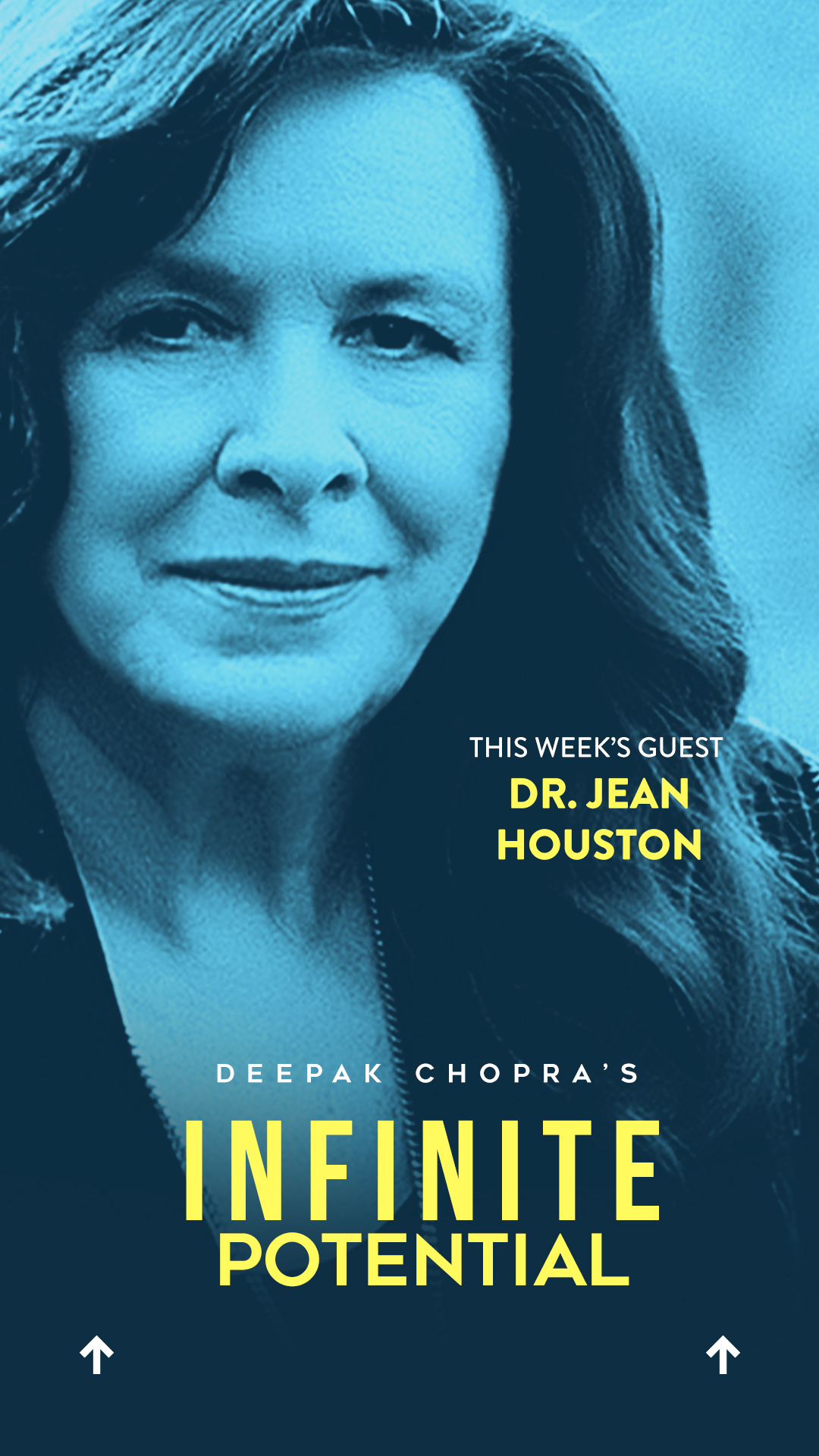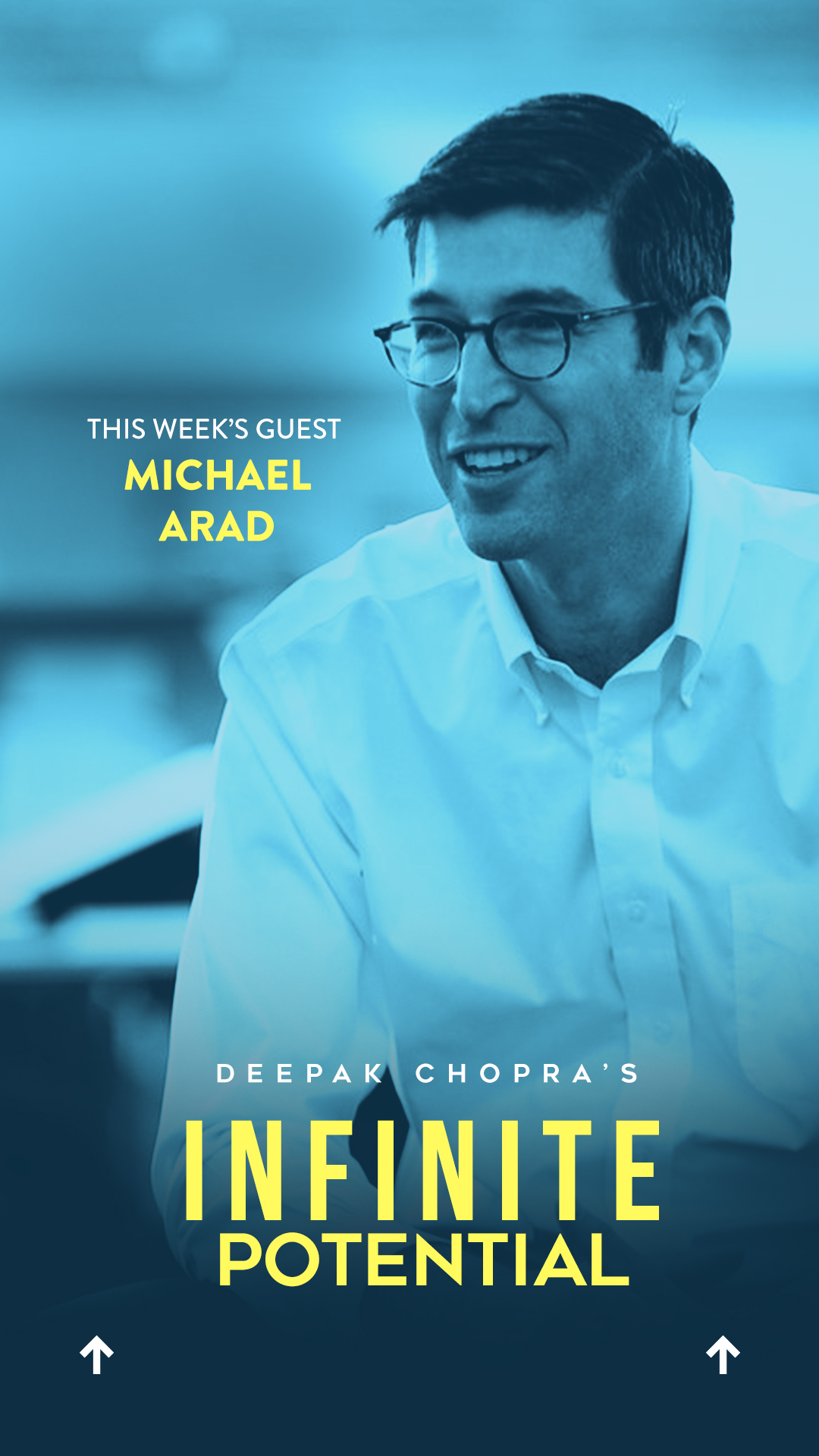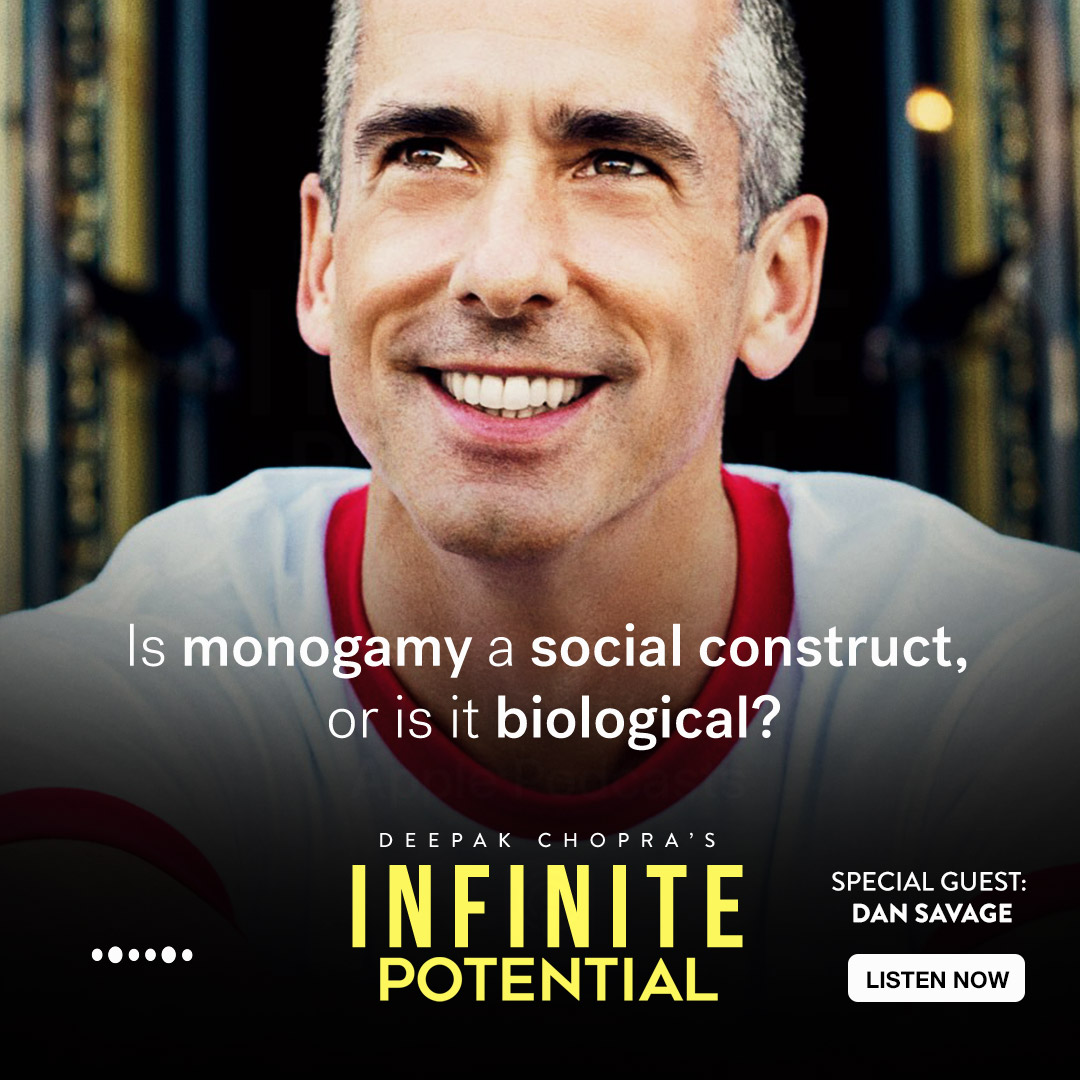By Deepak Chopra™, MD
The COVID crisis is being fought on two fronts, medical and economic, but most people are suffering psychologically. The word “existential” rarely comes up in normal everyday life, but the crisis has created all the symptoms of existential dread: a sense of futility, anxiety about the human condition, and a deep fear of death. This comes as a shocking occurrence, and if there is such a thing as existential healing, now is the time for it.
Questions about existence baffle people, and there seems to be no reason to confront them until the last moment. One of the reasons that Elisabeth Kübler-Ross’s 1969 book, On Death and Dying, was seized upon by millions is that she drew a map of grief that showed dying patients that the inevitability of death wasn’t terrifying in the end. The five stages of grief outlined by Kübler-Ross—denial, anger, depression, bargaining, and acceptance—coincides with what is seen in hospice care. The prospect of death for most people leads to acceptance.
But there is a sixth stage of grieving that applies right now: meaning. The most fortunate patients go beyond acceptance to see that their lives had purpose, that existence is meaningful, and therefore that death lost its final power, which is fear and dread. This is the healing that I think should be embraced now. The actual deaths caused by COVID-19 are outnumbered by the cases of fear and dread being experienced on a mass scale. One way or another, we have all entered the grieving process.
There are two paths to arrive at the peace that comes when your life is meaningful. The first path is through action and achievement. You set out on a purpose, and you succeed in fulfilling it. Ideally everyone should be able to create meaning through the work they do, the service they offer, the love they share, and the good they achieve. But during lockdown, there is often no outlet for this path. We find ourselves passively victimized by a mindless virus that is achieving far more than its human victims; that is, its purpose in life, which is to find a host and multiply, has been astoundingly successful.
But the second path to a meaningful life hasn’t been touched by the virus, and never can be. This path is one of realization. You go inside and discover that you are sustained by your own being. At your core you find value, no matter what you do in life, and no matter what external threats assail you. This path has been open forever, and its teaching occupies the world’s spiritual traditions both East and West. Nirvana, Moksha, liberation, the Kingdom of Heaven within, the peace that passes understanding: by whatever name, the path is essentially the same.
The problem is that we have erected mental barriers that block this path, which should be the easiest path imaginable. Its message is grasped naturally by children: You are here, and that is enough. There is no need to a pilgrimage to a holy place, years in a spiritual retreat, long immersions in silence, or the proverbial cave in the Himalayas. The only thing to do is to wake up as directly as you can, here and now. So why don’t we? It isn’t as if the teachings from spiritual guides, teachers, seers, sages, avatars, gurus, and saints is lacking. What’s the problem?
Once you ask this question, you are on your way to waking up. Existential dread is actually a mental creation. We listen to the voice of fear in our heads; we let fear become an emotion that we feel powerless to oppose; we are lulled into passivity by the everyday routine of life; we don’t bother to see for ourselves; and we have a lot of desirable goals in mind that make it easy to avoid the inner journey.
If you set all of that baggage aside for one moment of clarity, you will see clearly that existence has never been the problem. In fact, it is the solution. Every moment of epiphany, revelation, divine presence, inner peace, etc. has only one source: existence. You have to be here first before anything, good or bad, can happen. So why not just be here? The thinking mind cannot just be here, because it is filled with a riotous display of thoughts, feelings, and sensations. Yet these must have a source, and the source isn’t a thought, feeling, or sensation.
The source is existence. The spiritual promise, the goodie that every religion holds out, is that there is “higher” existence. But this too is a mental construct. Existence isn’t like a luxury high rise that saves the best apartments for the top floors. Existence is the rock solid, indestructible, eternal, immutable zero point at which everything begins. Simply by existing, human beings are given infinite possibilities in life. That alone is the source of life’s vibrancy, as well as our own joy, live, creativity, discovery, and evolution.
The real promise that we should all explore is this: Being is more meaningful than doing. The ultimate healing, the end of all fear, including the fear of death, is contained in that simple axiom. Being is more meaningful than doing. This is why Buddhism engendered the concept of non-doing. Settle down in yourself, meet yourself in silence, appreciate the silence, and accept the peace that is part of existence. You can’t create peace; you can only discover it.
We test out how life works through our experiences. The good experiences encourage us to give a cheer for being alive; the bad experiences raise doubts, fear, uncertainty, and depression. So healing cannot come from amassing more good experiences until your bank account is bursting with them. Goodies don’t make for a good life. Only life makes for a good life. Shed all your experiences temporarily, in other words sit in silence for a few minutes. You won’t know who you really are or what your life means until you meet yourself inside. What awaits is the merging of self, silence, existence, and being. In this merging lies the answer to fear and dread. More importantly, this is where life finally begins to mean everything we want it to mean.



